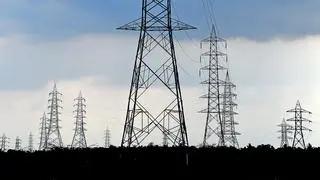The Centre, in the Budget, has continued to increase expenditure allocation for road and railway projects. The pure construction contract format (EPC - engineering, procurement and construction) and hybrid annuity model (a mix of EPC and long-term leasing contract under the annuity scheme) are the main modes of awarding road project construction contracts. This should benefit playerssuch as PNC Infratech (PNC).
About 90 per cent of the company’s order book at the end of December 2016 comprises EPC orders. It undertakes EPC and maintenance contracts to build and operate roads, highways, power transmission lines, airport runways, railways, dedicated freight corridor and industrial area development.
Majority of the company’s projects are in Uttar Pradesh. The BJP’s big win in the State’s election could mean an increased focus on road infrastructure and speedier dispute resolution regarding land acquisition; this will benefit companies such as PNC. Despite drop in revenue for the nine months ending December 2016 due to demonetisation effect and pending land acquisition, the company has maintained good profitability.
Investors with a two to three year perspective can buy the stock. Its current price discounts the trailing 12-month earnings by about 15.8 times, lower than its three-year average of about 16.5 times. The valuation is also lower than that of its peers KNR Construction and Dilip Buildcon (about 22 times).
Thrust on infrastructureFor 2017-18, the Centre has budgeted ₹64,900 crore for road projects, 24 per cent higher than the year earlier. Over the last three years, the Centre has managed to increase the rate of road construction to 20 km per day in 2017-18 from 12 km per day in 2014-15. Also, it plans to lay close to 2,000 km in coastal roads. This should help PNC whose core strength lies in highway construction and development. Similarly, the Railway Budget allocation stands at ₹1.31 lakh crore, about 10 per cent higher than the earlier Budget. PNC which undertakes EPC construction of railway lines could benefit.
The third quarter of 2016-17 saw some projects bid by PNC being delayed due to land acquisition issues. But the situation is expected to improve. The company’s management has indicated that National Highways Authority of India is open to giving approvals for construction of road projects on acquiring 60 to 70 per cent of the land, rather than the earlier norm of 90 per cent.
Also, apart from being a formidable player in the EPC segment, PNC operates seven long-term build operate transfer projects (BOT) for a total of 3,492 km — four pure tolling format, one operation maintenance and transfer format and two under annuity format. .
The revenue flow from these BOT projects was impacted in the December quarter due to demonetisation-related stoppage of toll collection for 23 days. The government authorities have agreed to compensate the company for the lost revenue and cost incurred for maintenance during this period. But the company has not accounted for this yet. This contributed to a near 23 per cent drop in revenue from operations during the third quarter.
The company’s order book at the end of December 2016 stands at ₹5,600 crore, about 2.3 times its 2015-16 consolidated revenue.
With the effect of demonetisation waning and other construction risks fading, the company hopes to achieve more than 20 per cent growth in revenue in 2017-18. It also expects to win orders worth more than ₹3,000 crore in the current fiscal year.
Improving financialsPNC’s consolidated revenue grew at average annualised growth rate of 17 per cent between 2011-12 and 2015-16. During this period, operating profit and net profit grew 28 per cent each on annualised basis.
The company’s revenue at ₹2,411 crore for 2015-16 was 28 per cent higher than in 2014-15. For 2015-16, the operating margin and net profit margin were about 17 and 9.6 per cent respectively. The net profit grew more than 150 per cent during the period.
The consolidated profit for nine months ending December 2016 was ₹1,733 crore, 17 per cent lower than the year-ago period, primarily due to the impact of demonetisation and land acquisition issues. The operating profit and net profit grew 10 and 77 per cent respectively, during this period.
The debt-to-equity ratio at the end of September 2016 was 1.1 times, slightly lower than the 1.2 times at the end of March 2016.








Comments
Comments have to be in English, and in full sentences. They cannot be abusive or personal. Please abide by our community guidelines for posting your comments.
We have migrated to a new commenting platform. If you are already a registered user of TheHindu Businessline and logged in, you may continue to engage with our articles. If you do not have an account please register and login to post comments. Users can access their older comments by logging into their accounts on Vuukle.